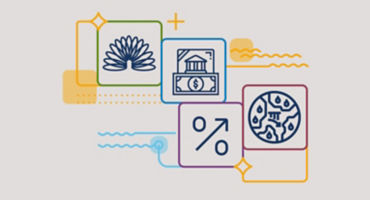A brightening landscape for EM debt assets
EM credit spreads in both sovereign and corporate debt have widened alongside other fixed income assets and, after several months of underperformance following Russia’s invasion of Ukraine, have reached levels that may suggest that current valuations more than compensate for the negative shock. These lower valuations could provide opportunities for deep country-by-country analysis and relative value security selection to capitalize accordingly. For example, fundamentals for many EM corporate issuers look particularly strong within the oil & gas, telecom, utilities, and infrastructure sectors.
Most EM central banks were well ahead of their DM peers, having collectively raised interest rates significantly as of this writing, thereby helping to lift EM local-market yields to attractive levels. The rate-hiking cycle has been unexpectedly extended by the inflationary impact of the Russia/Ukraine conflict. Country differentiation remains important here, as monetary policy responses have varied, with some EMs nearing the end of their hiking cycles (e.g., in Latin America). As global economic activity begins to normalize, fiscal stimulus measures fade, and central banks withdraw liquidity, inflationary pressures should start to subside. This would allow EM policymakers greater latitude to stabilize rates before shifting to an outright easing cycle, particularly considering the economic slack present in many EM economies.
On the EM currencies front, we have observed several crosswinds at play, including US dollar (USD) upward directionality and interest-rate volatility on the back of many investors’ flight to perceived “safety”. Over the longer term, we anticipate that proactive actions by many EM central banks and a wider US external trade deficit (the EM trade balance has rapidly shifted to deficit over the past 12 months) likely will help bolster EM currencies.
Lastly, technicals in EM local markets indicate that they are generally under-owned by foreign investors, suggesting less demand amid more muted supply. In EM credit, new issuance has been well below historical averages and is expected to remain subdued. While supportive, this decreased supply also diminishes liquidity, leading to wider bid/offer spreads. Investor outflows accelerated in the third quarter but have recently shown signs of slowing. Hard-currency funds have experienced higher outflows and lower levels of crossover interest, while local outflows have been dominated by regional allocators.












